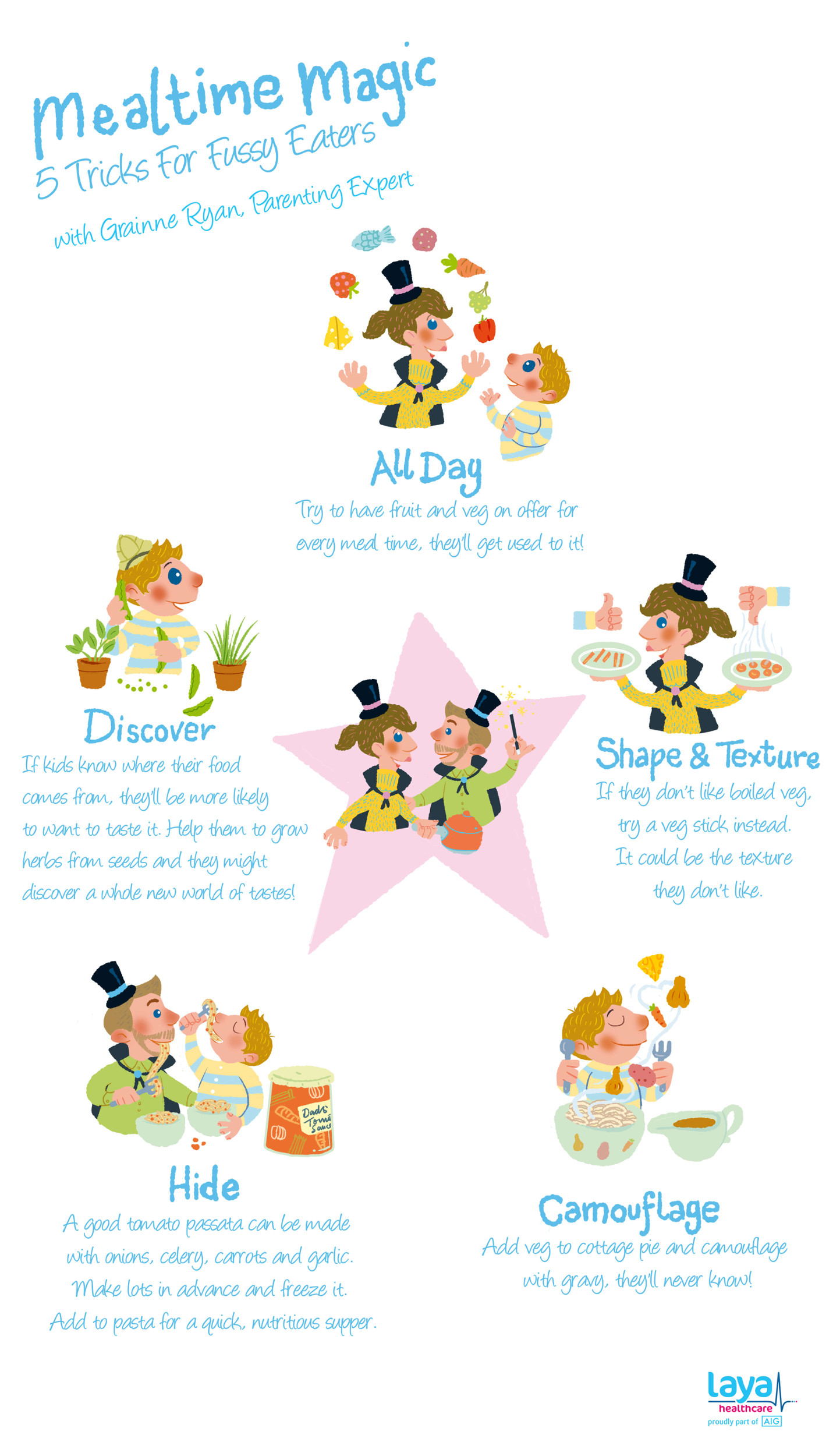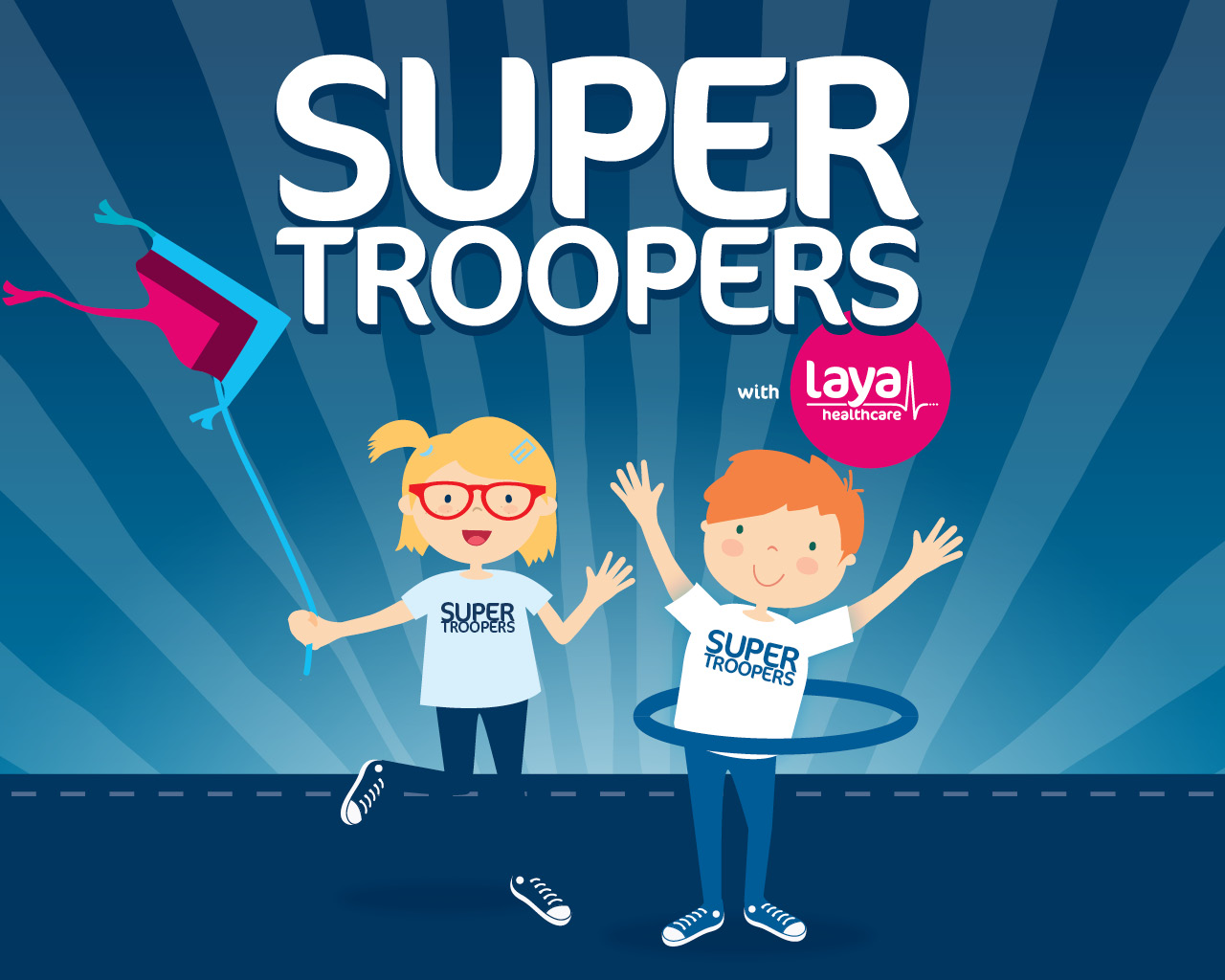Making food look appealing is just as important for children as it is for adults. Looking and thinking about food is one of the first stages of digestion. If food looks attractive and fun children are far more likely to want to eat it. Giving individual portions helps make food more appetising and can make a meal appear less challenging. Mini versions of traditional meals i.e. shepherd’s pie, baked in small dishes are always popular. Allow children to assemble their own food. Lay out a variety of ingredients for your children to put together. This works very well with pizza’s and wraps. Fruit chopped into bite sizes and placed on a skewer or a straw is another helpful approach.
Offer your child food that packs lots of nutrition into small doses. This is particularly good for toddlers who are often as active as rabbits but seem to eat as little as mice.
Nutrient rich foods that are attractive to children include avocados, pasta, broccoli, peanut butter, brown rice, potatoes, cheese, chicken, eggs, fish, sweet potatoes and greek yogurt.
 Menus
Menus
Chatting to your children about food is great but that alone does not provide any experience. You could tell your three year old that Spinach will give them muscles like Popeye and that carrots will help them see in the dark however you will be competing with TV ads which may tell a different story. With both sides telling different tales about what food they should choose to put in their body, who will your child believe?
Involving your child in the process of planning what you should eat is an important step in raising healthy grubbers and children that accept what is on the plate for breakfast, dinner and lunch.
Give them choice
Giving your child a choice between green beans or broccoli can make them feel good about putting that particular veg onto their plate. Children look to decide what they put in to their own body, and giving them choice over food options is a wonderful step in stopping the need for them to tell you “no” just for the sake of telling you so.
Exposure is half the battle
Giving your child food options before it lands on their plate will assist with mealtime mania. Surprises are not for everyone, and especially food surprises. As well as creating ownership over the meal and reducing disappointment from dinnertime, it also makes favourite dishes come with a level of anticipation…great for the digestive juices.
Start with a simple choice
Do they want green beans or broccoli with dinner? These small options will allow them choices between ingredients that do not change the overall meal, but will feel like a small bit of ownership over the dish.
Go shopping together
Point out the vegetables they can choose from. Do you think we should have red or green cabbage for dinner tomorrow? Moving the choice towards the shopping experience opens up the possibilities more for them and it’s a wonderful time to talk about food options.
Cooking method
Once your child gets a sense for how choosing side dishes are done, start asking how they would like it cooked. Do they want to steam the broccoli or cook it in a casserole? This helps explore new ways that they might like food that they previously thought they didn’t and it can help them think about how food taste and texture change depending on how they are prepared.
Planning Menus
Planning with your child can be great fun and when you make it part of your weekly routine your child will look forward to doing it regularly. It helps to spark an interest in what they are eating.
Plan a colourful dinner. Children are drawn to bright colours. Luckily bright coloured fruits and vegetables are not only delicious, but nutritious. Get your child to think of meal ideas including as many brightly coloured fruits and vegetables as possible.
Pull out cookbooks with colourful pictures or go online and find recipe websites that have pictures with each recipe. Ask your child to pick a few recipes that looks good based on the picture. Children are more likely to try something new if they see a picture that look good to them. For the younger children, cut out pictures of all different type of foods and make a scrapbook of different menus.
When the meal is over, chat about what your child liked and disliked about the food so that their comments can be taken into consideration for the next meal they plan.
Get Cooking
Children are more likely to eat their own cooking/baking, so, where appropriate let your picky eater help prepare the food. It can be a fun affair, however patience in coping with the helping hands from small children will often determine how much you are able to tolerate. Cookie cutters can be used to create edible designs out of foods like cheese, bread, thin meat slices or cooked lasagne. Get your child to tear and wash lettuce, wash potatoes or stir batter. Put batter in a squeeze bottle and let your child watch as you squeeze the batter onto the pan in fun shapes, such as heart, numbers, letter or even your child’s name. They can also be involved in setting the table, whether that is laying out mats for under the plates or setting out cutlery or crockery. When children are part of the preparation they are more likely to feel part of the meal too.
Here are some tips to try out when cooking with your kids!
Dress your child up in chef’s clothes, hats and aprons and allow him to get stuck in.
Children have short attention spans so give them quick and easy jobs. Keep the instructions simple. Give age appropriate duties
When children get excited they may forget steps
Young children need constant supervision
Expect spills and messes and give children jobs to help clean up
Again give plenty of praise for all attempts at cooking.
Focus on hygiene and safety and lay ground rules. Teach children to tie hair back, roll sleeves up and remove jewellery.
It is never too late to start involving children in your family meals. You will be making memories and teaching lifelong healthy habits at the same time.
Mealtimes are one of the keystones of family life. Whenever possible get the whole family eating together. This can make a difference where fussy eaters are concerned. Show your child that mealtimes can be fun and relaxing and not a source of anxiety. Take time to chat, rather than focusing on what is on the plates. Talk about the events of the day. This will help to take the pressure off children who may feel that what – and how much – they eat is being scrutinized.
When you have small children it is important to make an effort to be consistent in this respect and that structured mealtimes are in place. Ensure that they are not too close together as children may not be hungry or too far apart as children may be snacking or have low blood sugars affecting their behaviour.
Give your child an advance warning when a meal is coming up. “Supper is in ten minutes, please finish up your game and wash your hands. Do not expect them to drop what they are dong and run to the table immediately. Give them time to prepare themselves for the change in activity.
Keep food servings age appropriate. Wondering how much to offer? A young child’s stomach is approximately the size of his fist. So serve small portions at first and refill the plate if your child asks for more. The less is more meal plan is more successful with the fussy eaters.
The “bite-rule” worked with my kids. “Take one bite, two bites….” (However far you think you can force it without force feeding). The bite rule at least gets your child to taste a new food, while giving her some control over the feeding.
Rules which are good life skills also:
Children should wash their hands before they eat
They should sit at a table and not run off and eat elsewhere
No meals in front of T.V. Turn telly off during meal times
Children should stay at the table until you tell them they can be excused. Be realistic!!
Please and thank you are important words to learn
Mealtimes are not only about getting the right amount of food into your children at the right time, they are opportunities when families sit down together, share the day’s news and enjoy each other’s company.
Follow us on Facebook and Twitter for more parenting tips, advice and interesting case studies. Explore our site for more information on health insurance options or to get a health insurance quote online today.







